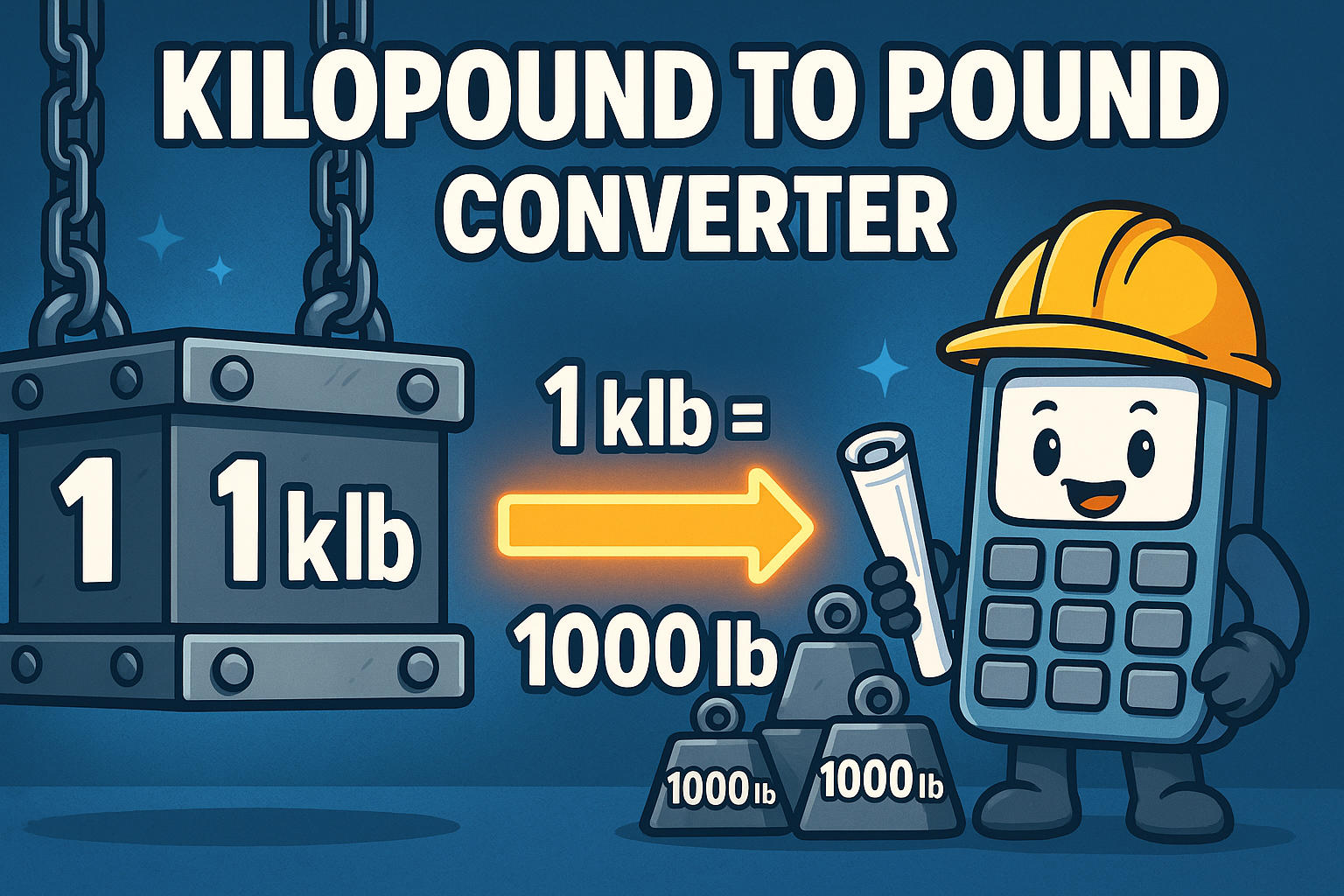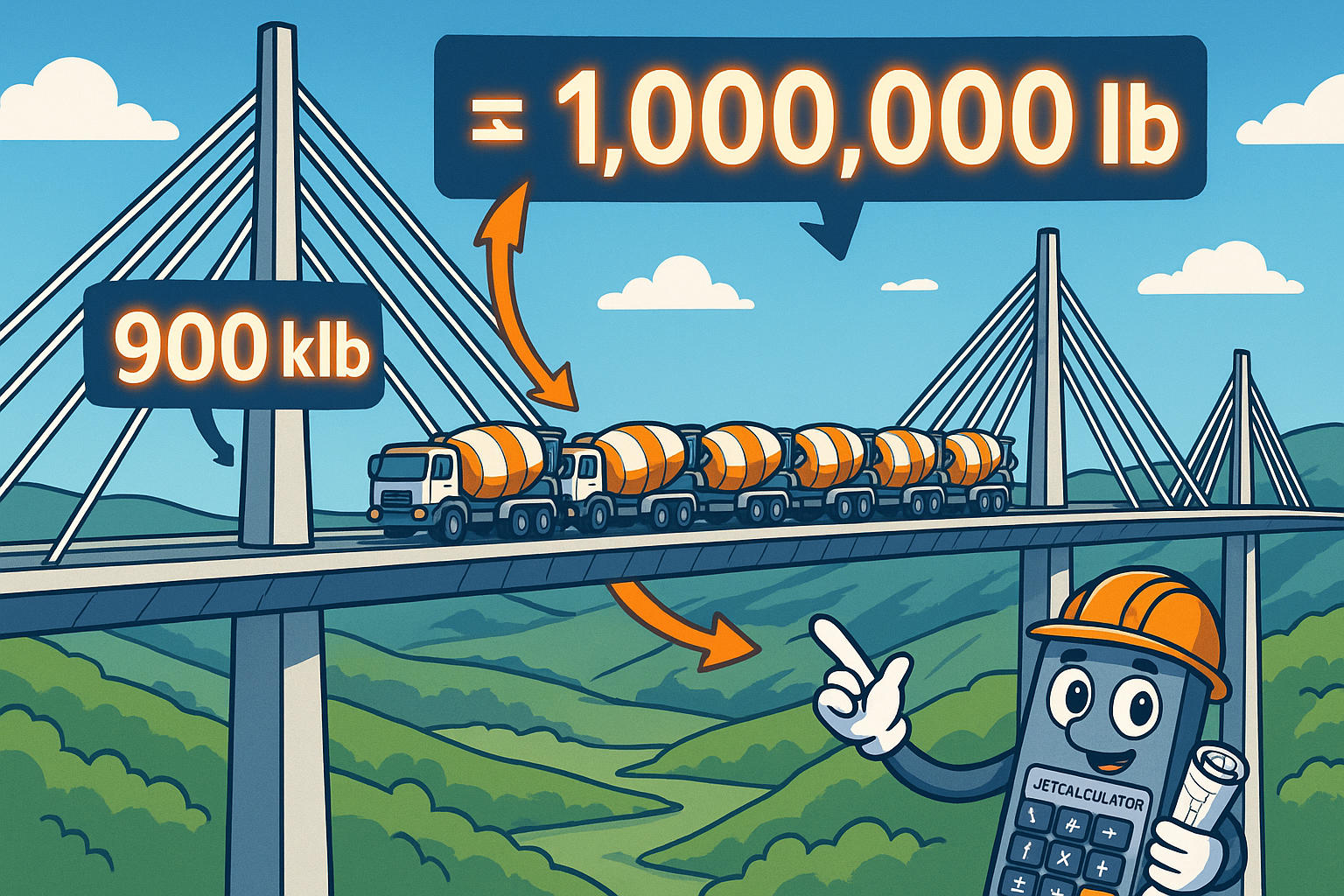kilopound to pound - How to convert klb to lb
Converting from kilopound to pound is essential in fields like engineering, construction, and materials science, where large forces or weights are commonly measured. If you’re dealing with structural load limits or mechanical calculations, understanding how to convert klb to lb ensures accuracy and compliance. Use Jetcalculator’s kilograms to pounds converter for instant, reliable results.

What are Kilopound and Pound?
A kilopound (klb) is a unit of force or weight, equal to 1,000 pounds. It's commonly used in engineering, particularly in civil and mechanical design, to represent large weight loads like beam resistance, pressure calculations, or tensile strength.
Because of its high value, the kilopound is more practical for summarizing large loads instead of listing huge numbers in pounds.
A pound (lb) is a standard unit of mass in the imperial system and US customary system. It is widely used in everyday measurements in the U.S. and is equal to 0.45359237 kilograms.
When used in engineering or physics, the pound can represent either mass or force depending on context. In structural calculations, it often refers to pound-force (lbf), which accounts for gravity.
You can also explore conversions using our weight calculator for more related units.
How to Convert Kilopound to Pound
lb = 0.001x klb
Example: convert 25 kip to lbs:
25 kip = 25 × 1000 lbs = 25000 lbs
Did you know?
-
In aerospace design, spacecraft components are tested to endure forces up to hundreds of kilopounds. NASA engineering reports often specify payload tolerance in klb.
-
According to a 2021 civil engineering journal, modern suspension bridges like the Golden Gate can withstand over 800,000 kilopounds of tensile force in their main cables.
-
In the U.S., the FDA mandates that certain food labels show weight in both pounds and grams for clarity across systems.
-
In boxing, weight classes are measured in pounds. Famous divisions like “Welterweight” (147 lb) and “Heavyweight” (200+ lb) define the sport’s structure and fairness.
When Bridges Talk in Kilopounds
During the construction of the Millau Viaduct in France—the tallest bridge in the world—engineers relied heavily on force calculations measured in kilopounds. Each tension cable and structural segment had to be tested to withstand enormous loads, often recorded at over 900 klb. In the final stages, engineers performed a massive load test: a fleet of trucks filled with concrete was strategically parked across the entire bridge to simulate real-world traffic stress. The combined force applied to the structure reached nearly 1 million pounds, and its performance was flawless. This wasn’t just a test of design—it was a statement about precision, engineering, and the vital role of standardized units like the kilopound.

Conclusion
Now that you know how to convert klb to lb, you’re ready to handle complex force and weight measurements with confidence. With 1 kilopound equaling exactly 1,000 pounds, the conversion is straightforward but vital—especially in professional fields where precision matters most.
Looking to explore other types of conversions like time, temperature, or digital storage? Browse the full list of tools in our Conversion category.

